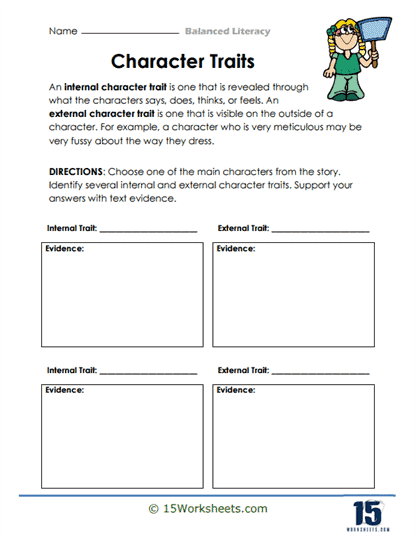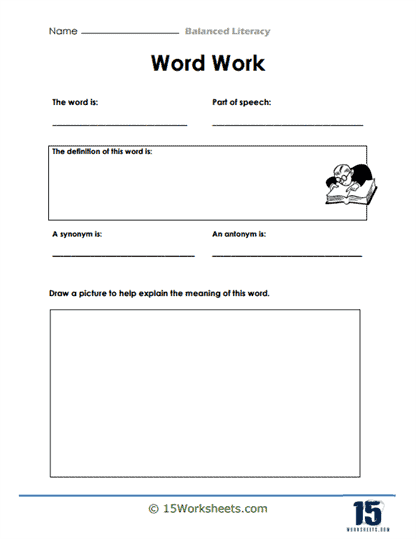Balanced Literacy Worksheets
All About These 15 Worksheets
These worksheets are activities designed around the balanced literacy approach. They help you practice the different parts of literacy in a structured way. For example, they will include a short story for you to read (that’s the reading part), some questions about the story to check your understanding (that’s the guided reading part), and a few sentences for you to write about your own thoughts on the story (that’s the writing part).
What’s cool about these worksheets is that they don’t just focus on one skill at a time. They combine several skills together, making your learning more connected and meaningful. Instead of just memorizing grammar rules or spelling words, you’re using them to understand stories and express your ideas.
What is Balanced Literacy?
Balanced Literacy is an instructional approach to teaching reading and writing that combines various strategies and methods in a balanced way to meet the diverse needs of students. This comprehensive approach aims to provide students with opportunities to develop their reading, writing, listening, and speaking skills through a variety of activities and experiences.
What Are the Main Components?
Read Alouds – The teacher reads aloud to students, modeling fluent reading and demonstrating comprehension strategies. This helps students build their listening and comprehension skills, as well as exposes them to a variety of genres and text types.
Shared Reading – The teacher and students read a text together, with the teacher providing support and guidance as needed. This collaborative approach allows students to practice reading strategies, develop fluency, and build their confidence.
Guided Reading – In small groups, the teacher provides targeted instruction based on individual students’ needs. This helps students develop reading strategies, improve comprehension, and become more proficient readers.
Independent Reading – Students read texts at their own level and pace, choosing from a wide variety of genres and topics. This promotes reading for pleasure and encourages students to develop their own reading preferences.
Word Study – Students learn about the structure of words, including phonics, phonemic awareness, and spelling patterns. This helps them decode unfamiliar words and improve their overall reading and writing skills.
Shared Writing – The teacher and students co-create a piece of writing, with the teacher modeling the writing process and providing guidance as needed. This allows students to practice writing strategies and learn about the different stages of the writing process.
Interactive Writing – The teacher and students collaboratively compose a piece of writing, with students contributing ideas and the teacher writing the text. This helps students see the connection between oral language and written language and supports their development as writers.
Independent Writing – Students engage in writing activities independently, choosing their own topics and genres. This allows them to develop their writing skills, express their thoughts and ideas, and build their writing stamina.
Word Work – Students engage in activities that focus on vocabulary, grammar, and mechanics. This helps them expand their vocabulary and improve their writing skills.
By incorporating these various components, Balanced Literacy seeks to create a rich and engaging learning environment that supports the development of strong readers and writers.















